AN INTRODUCTION
The Colosseum has been standing in Rome for nearly two millennia. Well, at least one third of it has been standing. The other two thirds? We’ll get into that later. Construction started on the Colosseum in 72 AD and it was completed in 80 AD. A mere eight years to build such a sophisticated structure is truly remarkable; however, it needs to be taken with a grain of salt, considering the tens of thousands of slaves who perished while building the Colosseum.
The Colosseum was conceived of and constructed during the reign of the Flavian Dynasty. This Dynasty consisted of the Emperor Vespasian and his two sons, Titus and Domitian, who ruled after him respectively. Originally named the Flavian Amphitheater, after this Dynasty, the nickname of Colosseo would come later.
The inauguration of the Colosseum was celebrated with 100 days of games that were free to the public and funded by the emperor. There were public executions, wild animal hunts and gladiatorial battles that brought to life the roaring crowds in attendance. Over time, as bloodsport went out of fashion, the Colosseum was no longer host to the gladiators and emperors of the past. It served various purposes throughout the centuries and, ultimately today, is the iconic symbol of Rome that attracts millions of visitors per annum.
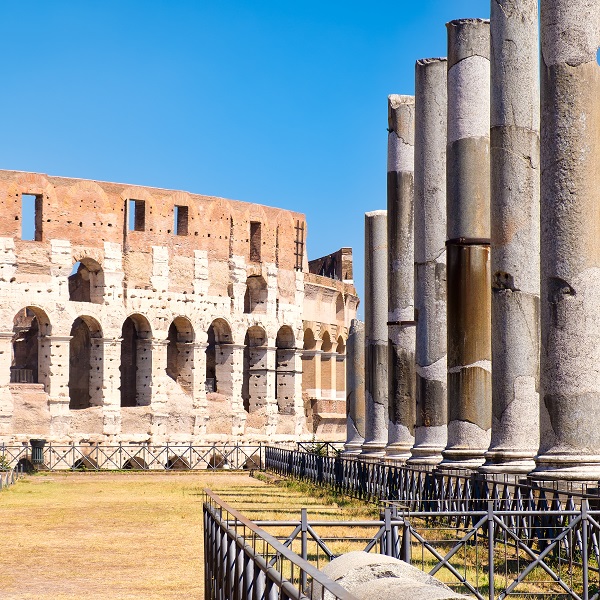

COLOSSEUM ORIGINS: THE EMPEROR NERO
Before any discussion regarding the Colosseum can begin, the story of the infamous Emperor Nero must be told. Nero came into power at the young age of 17 after his adoptive father, the emperor Claudius, died suddenly. Nero’s mother, Agripinna, was said to have been the driving force behind not only Nero’s adoption into the ruling family, but also arranged for his marriage to Claudius’ daughter, Octavia. There are even theories from classical sources that suggest Agrippina help Claudius’ sudden death to come about – with the help of poisoned mushrooms.
Initially, Nero garnered a reputation for generosity by making closed-door political trials open to the public and encouraging power-sharing within the Senate. Things began to sour when Seneca, one of Nero’s key advisers, encouraged him to free himself of his mother’s influence. This prompted Agrippina to turn against her son but, having already learned his mother’s ways, had his mother killed in her villa.
Nero gave himself to his artistic passions and would sing and perform on the lyre at private events. He also trained as an athlete and competed as a charioteer. Rumors abound after the great blaze of 64 AD, a fire that destroyed three districts of Rome and damaged many more, that Nero was responsible for the destruction. Whether or not this was true, Nero lay blame to the Christians and ordered for their persecution: some were burned on pyres that served to provide light for the emperor’s parties.
FLAVIAN DYNASTY: WHO BUILT THE COLOSSEUM?
The idea of the Colosseum was conceived during the rule of the emperor Vespasian. He and his sons, known as the Flavian Dynasty, were known to encourage senate authority and public welfare. Vespasian also discouraged the excesses of the Roman court that the previous ruler had been well known for. Naturally, the idea of gifting Nero’s land to the citizens of Rome was a welcome idea. This symbolic gesture was the starting point of the Colosseum.
Titus was ruling at the time of the Colosseum’s inauguration and he started things off with a bang – a festival including 100 consecutive days of games. It was spectacle after spectacle for the entertainment of the people of Rome and it was all free – taken care of by the emperor Titus. The crowds loved to be surprised and there was seemingly no end to the various wild and exotic animals that were put on display; some meeting their end in the arena after being hunted by gladiators.
Criminals would sometimes be sentenced to fight these wild animals in the Colosseum’s arena, their experience being different to that of the gladiators as they had no weapons or protections of any sort. The gladiator battles were the main event and peak of entertainment for the crowd. Champion gladiators gained celebrity status amongst the Romans and some even went on to win their freedom (gladiators were slaves, after all).
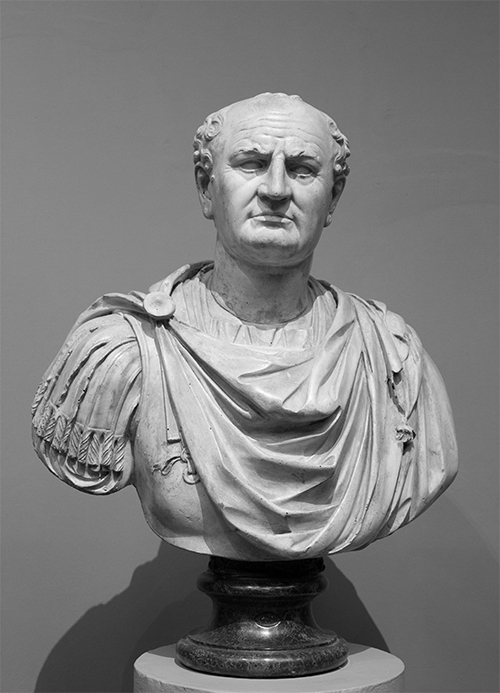
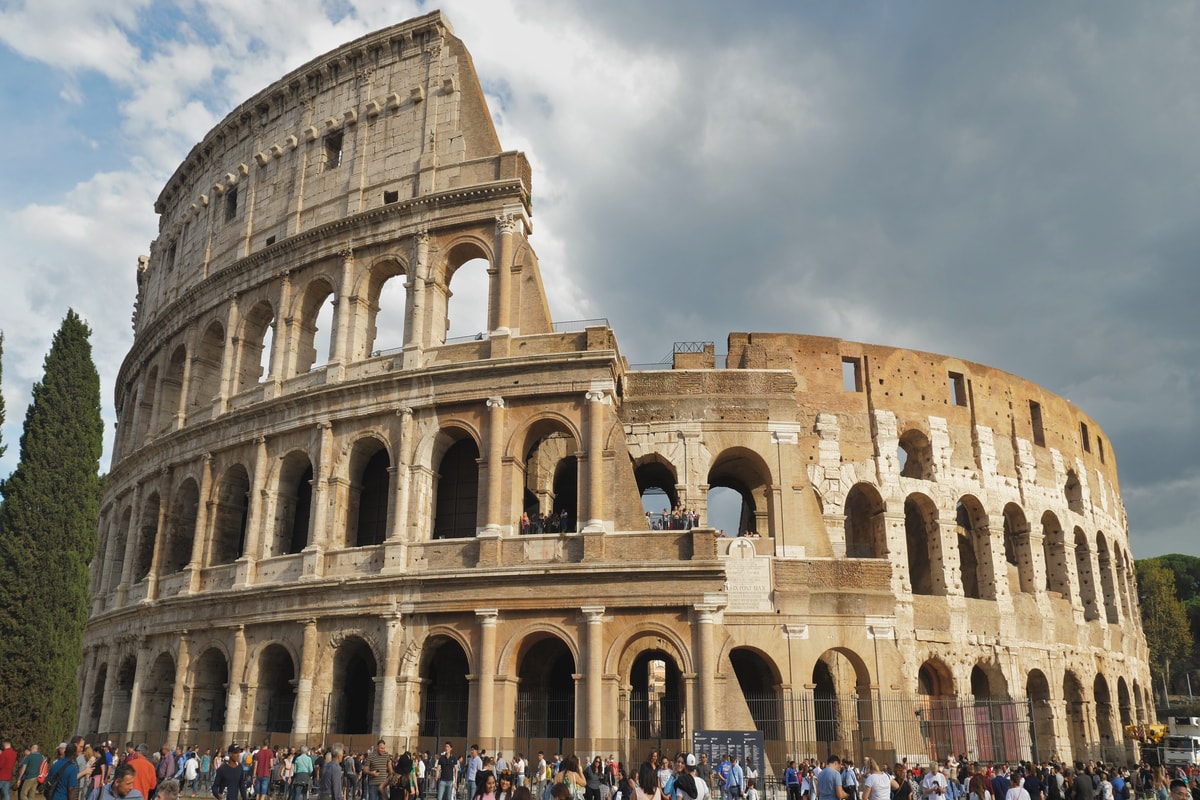
COLOSSAL DIMENSIONS: HOW BIG IS THE COLOSSEUM?
Carrying out the construction of the Colosseum was no easy feat. The area where the Colosseum was built had been part of Nero’s Domus Aurea and a man-made lake had occupied much of the valley. The engineers were able to drain this lake and reach the clay bed where they would lay the foundations for the Colosseum. An elliptical ring, measuring 31m wide and 6m deep, was excavated and filled with roman cement which was then perimetered with a brick wall for added support.
With the foundation in place, construction could commence. Standing approximately 48m high, the Colosseum was the largest amphitheater in the Roman world. It measures 189m by 156m and covers roughly 6 acres of land. Traditionally, amphitheaters were dug into hillsides in order to receive adequate support but, being a freestanding made with stone and concrete, the Colosseum was able to arrive to colossal proportions.
The Colosseum’s exterior had 3 distinct stories, each with 80 arched entrances that were supported with semi-circular columns. These columns were different for each level: simple Doric columns on the ground level, Ionic columns for the middle level and ornate Corinthian columns on the upper level. The combination of travertine blocks from a local quarry and statues in each archway contributed to the elegance of the Colosseum’s facade.
With such a grand scale, the Colosseum could seat at least 50,000 spectators (probably more as evidenced by the sardine-like seating of other Roman amphitheaters). Seating was arranged by social ranking with those least important occupying the upper level. The emperor, senators and other high-ranking citizens enjoyed ring-side seating along the marble podium that encircled the arena stage. The second tier was reserved for the noble class, the third for the middle class and the fourth for women and slaves. Actors, gravediggers and former gladiators were all banned from the Colosseum.
HOW DID GLADIATORS BECOME SO POPULAR?
Bouts between gladiators were in fashion long before the construction of the Colosseum and were a part of funeral rites for wealthy nobles. It was believed that human blood and sacrifice would help to purify the deceased’s soul. Julius Caesar, in honor of his deceased sister and father, stages bouts between hundreds of gladiators. The gladiator spectacles were so popular, in fact, that by the end of the 1st century B.C. it became common practice for government officials to gain the favor of the people by holding state-funded games.
In the early days of the gladiatorial battles, most combatants were slaves, criminals or men from conquered lands. As the popularity of the games increased, so did that of the gladiators themselves with many garnering celebrity status among the Romans. The roar of the crowds, as well as the prize money, lured many free men to sign up voluntarily. While these men were, for the most part, either skilled fighters or desperate for cash, there were those from the wealthier class that couldn’t resist to show off their skill.
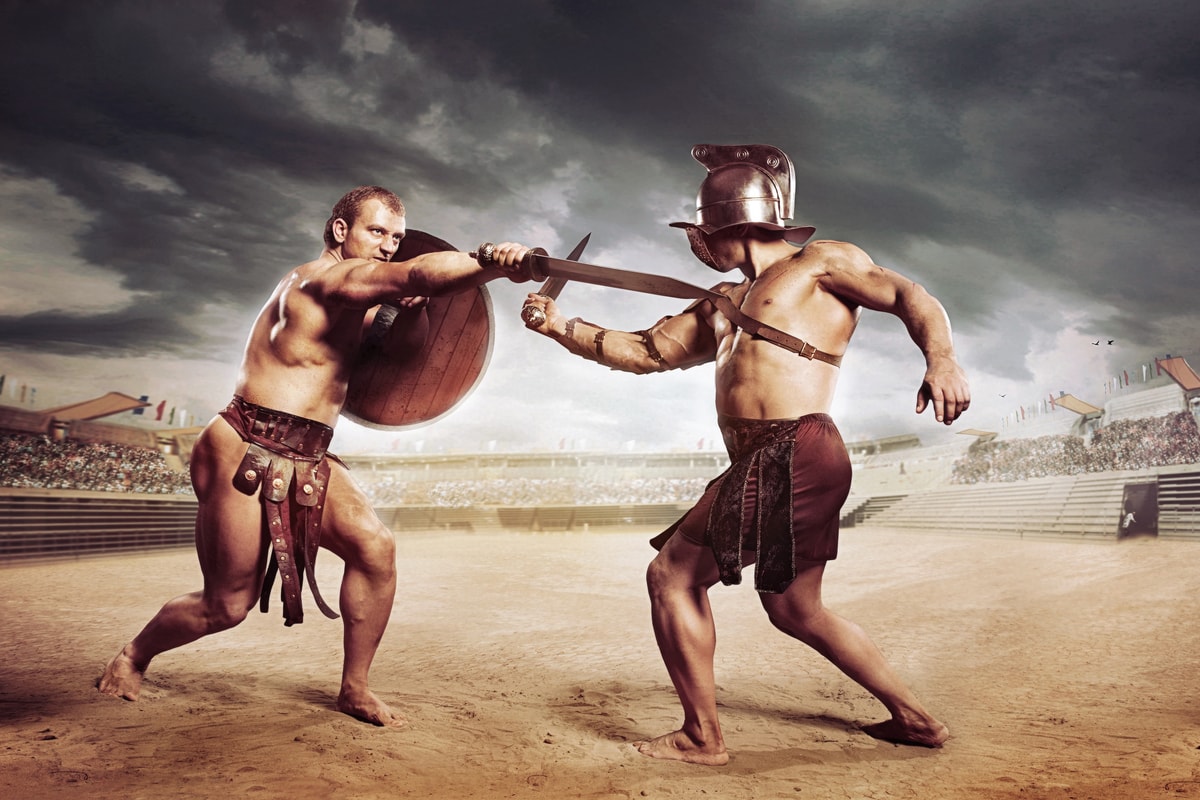
Gladiators were not cheap. Gladiators lived and trained in what was called a ludus and these facilities often had seating of their own where locals would come to watch them train. The Ludus Magnus, seating 3,000 spectators, was the largest of these and was connected directly to the Colosseum by an underground tunnel. There was great cost in housing, clothing and feeding these warriors and the men that trained them were loath to lose them. Many of the battles didn’t end in death, the fights had strict rules and were overseen by referees and were most likely stopped if a gladiator was seriously wounded.
By the time the Colosseum was constructed, the battles between gladiators had evolved into a well-organized blood sport. The different classes of fighters were based on skill level, experience and fighting record. Highly specialized gladiators were equipped with particular weaponry and had a specific fighty style. The first type of gladiator was most probably the Samnite, coming from the Samnium region, whose equipment would consist of a small shield and gladius (small sword). Equites would enter the arena on horseback while the retiarius would be armed with only a net and trident. There were also female gladiators, though most likely their battles were not taken seriously. The Emperor Domitian was known to stage battles between women and dwarves. Eventually, female participation in the games was banned by the Emperor Septimius Severus circa 200 AD.

PALATINE HILL: HOME OF THE EMPERORS
The Palatine Hill is often overlooked due to its famous next-door neighbor, the Colosseum, but it plays an important role in the history of Rome. Legend has it that Romulus and Remus, twin brothers that were found and raised by a she-wolf, lived on the Palatine Hill. There have been human settlements on the Palatine Hill, according to experts, as early as the 10th century BC. The most famous of Rome’s seven hills, the Palatine was Ancient Rome’s most desirable neighborhood and called itself home to emperors and the upper-class.
The Palatine Hill attracted the “who’s who” in Ancient Rome for several reasons: the myth attached to the Palatine; it was central to the action of the city; it’s greenery provided a welcome relief to the hot and humid summer climate; and, maybe most importantly, it was a luxurious respite from the dirt and noise of the streets below without having to leave the city. Augustus, first Emperor of Rome, was born on the Palatine and made his home on the hill. The Emperor Domitian also resided here and remnants of the Stadium of Domitian can still be found.
Modern-day visitors can catch a glimpse of what life might have been like up above the city. From the lofty heights of the emperors, you can enjoy breathtaking views of the city of Rome (emphasis on the word breathtaking). The eastern perimeter has a view of the nearby Aventine Hill with the Circus Maximus down below: from the luxury of the palace the Emperor could enjoy the chariot races that kept thousands of spectators on the edge of their seats. The western side, however, offers a birds-eye view of the Roman Forum – the heart of Ancient Rome.
ROMAN FORUM: THE HEART OF ANCIENT ROME
Long before the Roman Forum became the heart of the ancient city, it was a vast marshland. Once drained using the world’s first sewage system, the Cloaca Maxima, this large rectangular space was converted into a public marketplace and meeting space. With its expansion and construction of temples, it soon became the central hub of the city. Trials, public speeches and official ceremonies made the Roman Forum essential to the politician and citizens alike.
The Roman Forum is home to ancient Rome’s most important sites that can still be seen today. With only eight remaining columns and not much else, the Temple of Saturn is a particularly striking sight. The massive Basilica of Maxentius and Constantine, Rome’s largest building at the time, was used as a courthouse and meeting hall. Its design would later inspire Christians as they built their first churches. The Roman Forum is also home to the triumphal arches of both Titus and Septimius Severus – the former showing intricate representations from Titus’ Siege of Jerusalem.
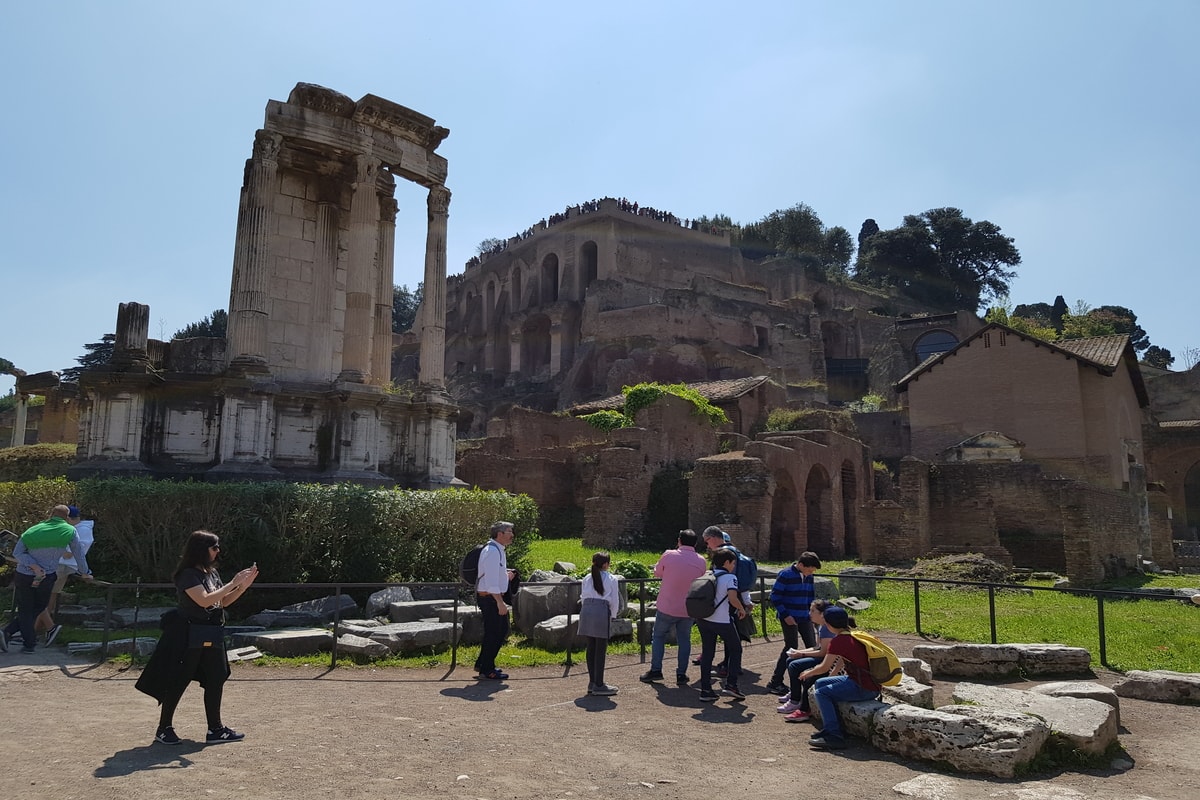
Walking up the cobbled path of the Via Sacra, with the Arch of Titus awaiting at the entrance of the Roman Forum, visitors follow in the footsteps of the ancient Romans. Scenes from everyday life of the Roman citizens – from senators to merchants to prostitutes – would have played out on this road. Inside the Roman Forum, throngs of ancient Romans would have attended Julius Caesar’s funeral and watched as his body was cremated. To this day, flowers are still left at the altar even though the burial site of his ashes remains unknown.
A silent witness of Rome’s turbulent past, the Roman Forum lay under debris for centuries and became known as the Campo Vaccino (“cattle field”). Finally, in the early 19th century, the area was cleared by an archaeologist and excavations began. The work is ongoing to this day, with new areas being unearthed and opened to the public. In all of Rome, the Roman Forum is the one place where you can truly be surrounded by antiquity.
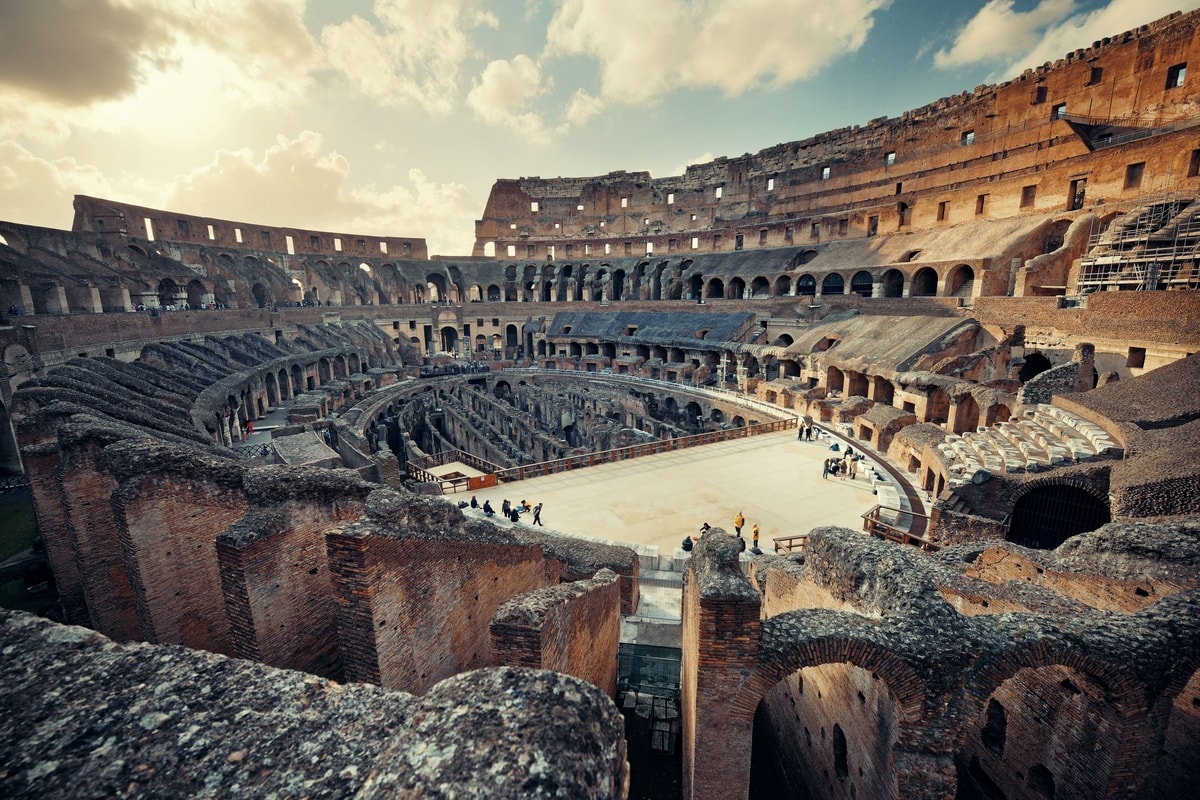
WHAT HAPPENED TO THE COLOSSEUM AFTER THE FALL OF ROME?
As time passed, the popularity of the gladiator games began to decline and the bloody battles were put to an end in the early 5th century. The Roman Empire itself fell on hard times and its economy and military prowess suffered greatly. Money that was once spent on entertaining the citizens of Rome and keeping the Colosseum in good repair was instead needed to defend the empire. Nature also had its role to play in the decline of the Colosseum. Fires, lightning and earthquakes all contributed to the amphitheater’s state of disrepair.
The lavish decorations were plundered from the Colosseum – including gold and bronze statues, inscriptions, and marble that covered the walls and stairs. The absence of huge piles of stone and rubble leads visitors to ask: what has happened to the outer wall of the Colosseum? The answer is simple: the travertine was recycled. The damage suffered by the Colosseum, because of earthquakes and the like, lead to ready availability of stone and building materials used throughout the centuries in other Roman constructions.
A long cry from its bloody past, the Colosseum had multiple uses throughout history: a chapel, a cemetery, a housing unit and workshop area. It was even used as a castle circa 1200 AD. Through all of its transformations, and despite being a bit broken, the Colosseum still stands today and gives its visitors a glimpse into the life of Ancient Rome
.